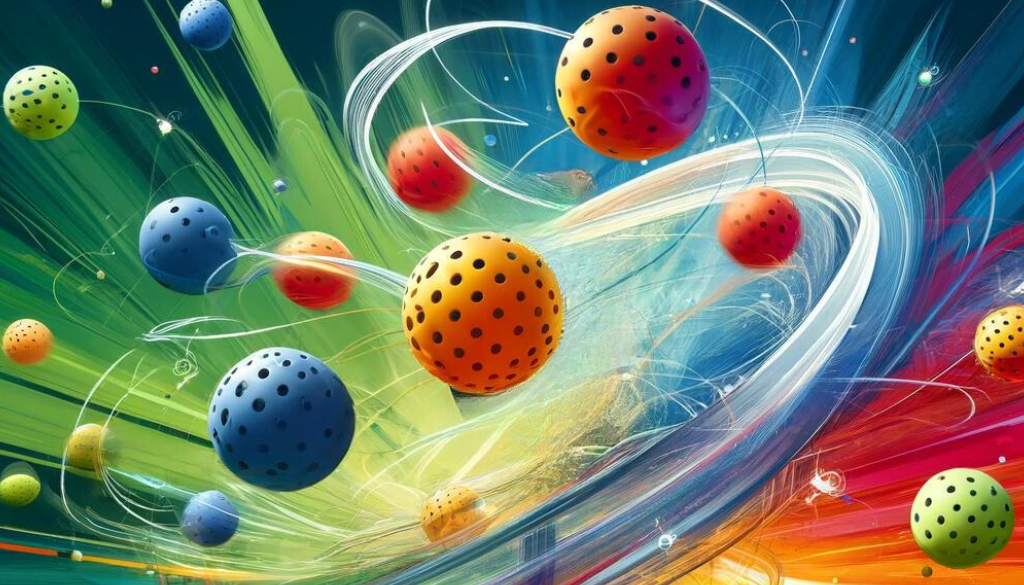In order to truly master the game of pickleball, learning the art of spin shots is a game-changer. Unlike the brute force bang shot, the subtlety of a spin shot can bewilder opponents and change the pace of the game. This lesson delves into the science of spin in pickleball, examining the types of spins, their effect on the ball’s trajectory and bounce, and strategies for both applying and countering spin effectively.
Understanding Spin
Spin in pickleball is the rotation of the ball around its axis, influenced by the way a player strikes it. The spin affects the ball’s flight path, speed, and the way it bounces upon hitting the ground, making it a potent tool in the hands of a skilled player.
Topspin
Topspin is generated by striking the ball in an upward motion, causing it to rotate forward. This spin makes the ball drop more quickly due to the increased air pressure on top of the ball. The result is a shot that seems to dive down into the court, making it ideal for keeping the ball in play on hard drives or for deceptive drop shots.
Backspin
Backspin, or underspin, is the opposite of topspin, achieved by hitting the ball with a downward stroke. This causes the ball to rotate backward, reducing air pressure beneath the ball and making it float and slow down. Backspin shots are harder to predict and can drastically reduce the opponent’s reaction time, a perfect way to slice shots near the net.
Sidespin
Sidespin occurs when the ball is hit with a sideways motion, causing it to curve in the air. The direction of the curve depends on the direction of the spin. Sidespin can be combined with topspin or backspin to create complex shot trajectories that are challenging to anticipate and return.
The Impact of Spin on Trajectory and Bounce
The trajectory of a spin shot in pickleball is dramatically affected by the type of spin applied. Topspin causes the ball to dip down sooner than expected, which is useful for clearing the net and dropping sharply into the opponent’s court.
Backspin, on the other hand, creates a floating effect, making the ball hang in the air longer and bounce lower, potentially throwing off the timing of the opponent’s return.
Sidespin introduces lateral movement to the ball’s flight, making it curve in the air. This can be particularly disorienting for opponents, as the ball may not end up where they initially predicted.
Applying Spin: Techniques and Tips
Generating effective spin in pickleball requires precise paddle movement and timing. For topspin, the paddle should move in a low-to-high motion, brushing up against the ball at the point of contact. For backspin, a high-to-low paddle movement is necessary, striking the ball with a slight downward angle.
When applying sidespin, the paddle should move laterally across the ball at the point of contact, either from outside to inside for inside-out spin or inside to outside for outside-in spin. Combining spin types, such as topspin with sidespin, requires adjusting the paddle’s angle and stroke path accordingly.
COUNTERING SPIN SHOTS
Receiving a spin shot can be challenging, but understanding how to read and react to spin can turn your defense into an unexpected and effective offense. When facing topspin, it’s crucial to adjust your paddle angle upwards to counteract the downward trajectory of the ball.
For backspin shots, a more level or slightly downward paddle angle can help lift the ball over the net.
Countering sidespin involves reading the direction of the spin and adjusting the paddle angle to redirect the ball straight. Anticipating the ball’s curved path and positioning oneself accordingly is also vital to making a successful return shot.
Practice and Anticipation
The key to mastering spin in pickleball lies in practice and anticipation. Developing a feel for how different spins affect the ball’s movement allows players to both apply and counter spin more effectively. Drills focused on generating and receiving spin shots can help players become more comfortable with the nuanced control required.
Advanced Tips for Countering Spin
Mastering the art of countering the spin requires keen observation, quick reflexes, and a strategic approach to each shot. Additionally, incorporating a small amount of opposite spin on your return can stabilize the ball’s flight and result in a successful return shot.
The key to successfully countering spin lies in adjusting your positioning and paddle movement based on the spin type and intensity, turning potentially difficult returns into strategic opportunities to regain control of the rally. Practice sessions dedicated to recognizing and reacting to spin will enhance your ability to neutralize its effects, making you a more formidable opponent on the court.





